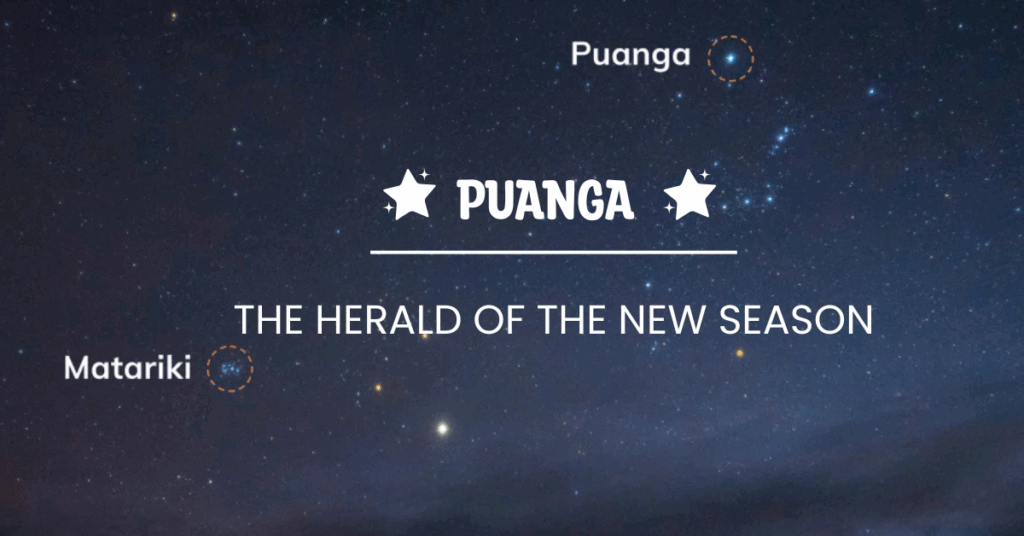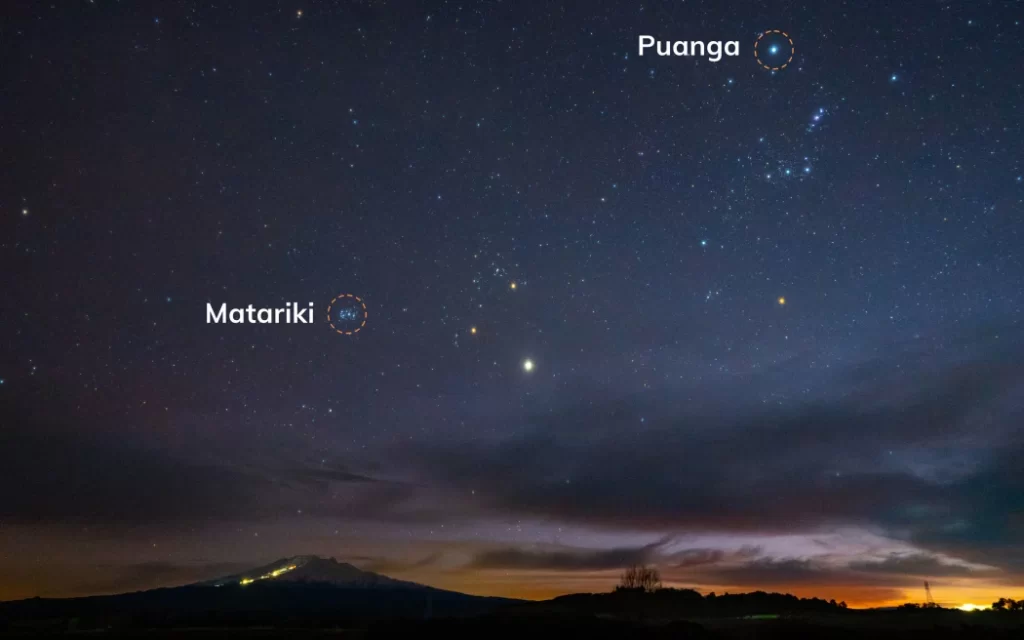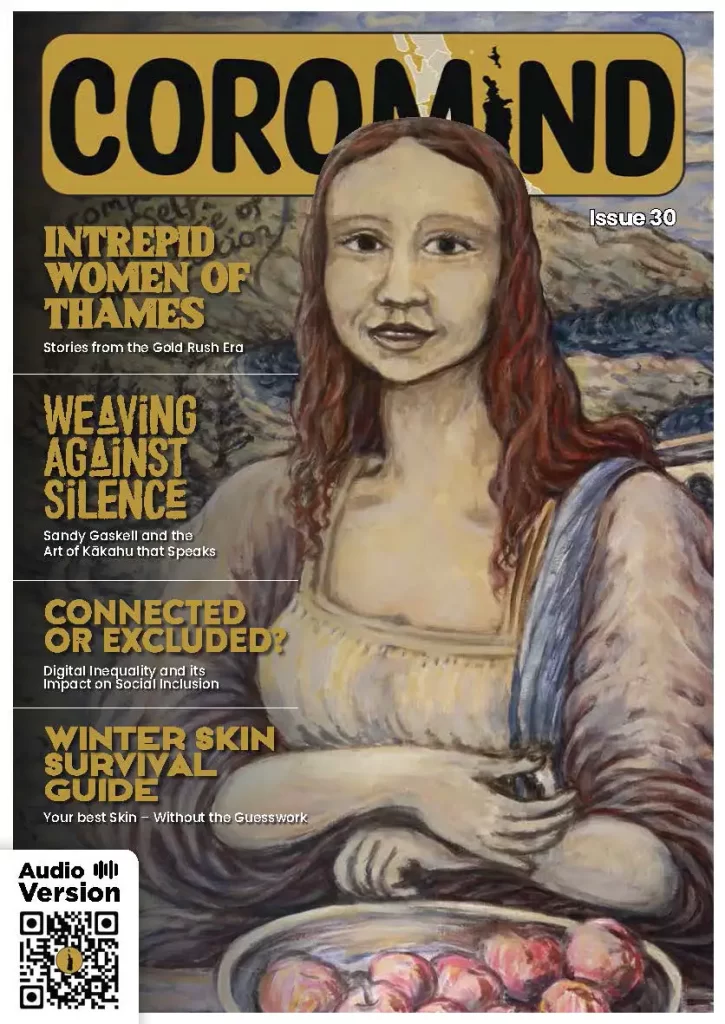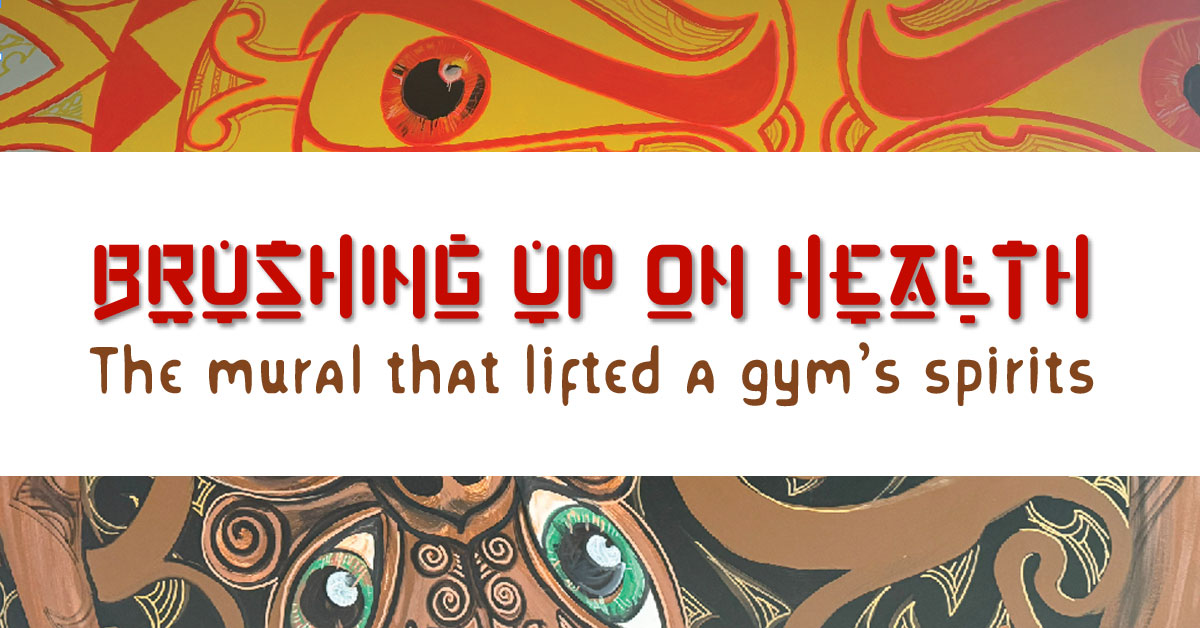
This year, the national Matariki celebrations shine a light on Matariki mā Puanga. But who is Puanga, and what is her significance?
While Matariki is widely known as the marker of the Māori New Year, in regions like Te Taihauāuru, parts of Northland, and the South Island, we look first to Puanga – a star just as important in our skies and stories.
Puanga is known as Rigel, a brilliant star in the Orion constellation. You’ll find her just north of Orion’s Belt, shining boldly with her three children below. In many traditions, Puanga appears before Matariki, acting as a celestial signpost – a signal of change and preparation.
‘Ko Puanga te kairūri i te tau tawhito, ko Matariki te kaihuaki i te tau hou.’
Puanga closes the old year; Matariki opens the new.
Across Aotearoa, iwi mark seasonal transitions differently, shaped by the whenua, the skies, and local knowledge. In my rohe along the Whanganui River valley, Matariki is hidden from view due to the terrain and prevailing westerlies. So, we look to Puanga to gain insight into the year ahead. Our tūpuna, ever adaptive, would journey from the riverbanks to the central plateau to catch sight of Matariki – observations remembered in the names of places, rivers, and landmarks around Koro Ruapehu.

‘Ka hua ngā pua, koia ko Puanga.’
When the berries blossom, there is Puanga.
This whakataukī signals an important seasonal marker. As the miro berries ripen, the kererū feast and become heavy – easier to harvest. Around the same time, the piharau (lamprey eel) begins its run. Both were vital food sources and powerful symbols of Puanga.
Like Matariki, Puanga is a time of reflection. We look back on the year, honour our loved ones who’ve passed, let go of burdens, and prepare to begin again. Some kōrero tuku iho speak of Te Rua o Puanga, a lake that disappears in summer and returns in winter. In its waters, on a clear night, it’s said you could see Puanga reflected – a reminder that what is above is mirrored below, here on Papatūānuku.
Puanga also signals preparation. Māra (gardens) are tended – weeds cleared, kai stored in pits or raised storehouses, and native trees like harakeke (flax) are planted. The cold season offers ideal conditions for transplanting and preparing the land. With fibres harvested during warmer months, kākahu (cloaks) and rain capes were woven to protect whānau through winter.
As physical labour slows, the mind and spirit are nurtured. Winter is a time for wānanga – to learn karakia, waiata, and whakapapa. It’s a time to turn inward, reflect, and strengthen our sense of identity. Intentions are set, and our connection to te taiao (the environment) is renewed. Gratitude keeps us grounded – a gentle warmth that clears the mind and steadies the heart through the darker months.
Puanga is also linked to procreation. Our ancestors saw winter as a time for closeness, warmth, and the continuation of whakapapa. Puanga’s three daughters – Poananā, Tahumate, and Pikiarero – are remembered in the night sky and in the blooming clematis flower. Their appearance on the earth signals the end of winter and the arrival of new life.
So while Matariki may be the more familiar name, Puanga carries just as much wisdom — guiding us through a sacred cycle of release, renewal, and readiness. Though observed at a slightly different time, with slightly different ceremonial practices, the essence remains closely aligned.
Matariki mā Puanga offers a beautiful and inclusive perspective to honour in this year’s Matariki holiday celebrations – proudly hosted by my iwi, Ngāti Rangi.
Words by Billie Hunter

Coromind: Coromandel’s Collaborative Magazine

Help us take Coromind Magazine to new heights by becoming a member. Click here
Change the Weather for Your Business: Advertise with Us.
Advertise your business in the whole Hauraki Coromandel in the coolest Coromandel Art Magazine, from Waihi Beach/Paeroa /Thames up to the Great Barrier Island.
Advertise Smarter, Not Harder: Get in Touch






